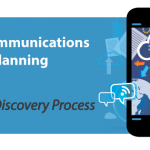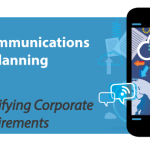When selecting a Unified Communications (UC) solution, it is of utmost importance that the technology meets the needs of the organization. The way a company operates should not be dictated by the technology. Rather, the technology should complement the drive and focus of the organization.
In my previous post we explored the steps that you need to take in order to discover your organization’s requirements. An element of that process is conducting interviews with executive members from a variety of departments within your workplace. A good practice prior to these meetings is being knowledgeable about your company’s vision statement(s).
The vision statement for any organization should be a clear statement of what the organization commits to become within the next three to five years. Similar to a road map, its purpose is to commit the organization to a particular direction and communicate this commitment to employees, customers, shareholders and partners. Aligning your UC project vision(s) to your corporate vision(s) will give your UC project guidance towards a desirable end-result that will enhance the way your organization does business.
Using Coca Cola as an example for a UC project, I will align the UC project vision(s) to Coca Cola’s corporate vision. Through this exercise, you will see how we can begin defining our UC requirements for a desired end-result. Coca Cola’s corporate vision consists of six clear statements concerning their people, portfolio, partners, planet, profit, and productivity. These six statements will shape Coca Cola’s UC project visions.
Coca Cola’s Vision Statements
People:Be a great place to work where people are inspired to be the best they can be.”
UC project vision takeaway: The UC solution must eliminate roadblocks in business processes. The technology must be simple, easy to use, and intuitive. The availability of new features such as video conferencing, presence, and VoIP can unlock new levels of productivity among employees.
Portfolio: Bring to the world a portfolio of quality beverage brands that anticipate and satisfy people’s desires and needs.”
UC project vision takeaway: Products of quality should be supported by business communication systems of quality. When a customer contacts Coca Cola, the quality of service should be exceptional.
Partners: Nurture a winning network of customers and suppliers, together we create mutual, enduring value.”
UC project vision takeaway: Providers of the UC solution must align with Coca Cola’s values.
Planet: Be a responsible citizen that makes a difference by helping build and support sustainable communities.”
UC project vision takeaway: Solution must demonstrate measurable energy savings and support work at home initiatives to reduce the corporate carbon footprint.
Profit: Maximize long-term return to shareowners while being mindful of our overall responsibilities.”
UC project vision takeaway: Be accountable for your financial decision concerning your UC solution; can you justify your decision regarding the purchase of one solution over another?
Productivity: Be a highly effective, lean and fast-moving organization.”
UC project vision takeaway: Solution must empower the corporate employees with collaboration tools that can be used across many devices, regardless of location.
I hope you have enjoyed this exercise. Your next step is to take a look at your own corporate vision statements to see how your project aligns.
Stay tuned for my next post on the Identifying Corporate Requirements.
Emily Nielsen,
UC Specialist & President of Nielsen IT Consulting Inc.
UC Strategic Planning Blog Series – Table of Contents
Having a plan is the first step to leadership. Follow our eight week blog series to learn key actionable items that are crucial to developing an effective UC Strategy for your company.
- Part 1a: UC Considerations
- Part 1b: UC Considerations Continued
- Part 2: The Importance of a Unified Communications Strategic Plan
- Part 3: The Discovery Process
- Part 4: Defining Your Vision
- Part 5: Identifying Corporate Requirements
- Part 6: Identifying UC Applications
- Part 7: Infrastructure Assessment
- Part 8: Final Thoughts




